281 posts
Latest Posts by twiggietruth - Page 3








Jan Sadeler I - Planetarum Effectus et Eorum in Signis Zodiaci (The Seven Planets), 1585. 1. Title Page 2. Sol 3. Luna 4. Mercurius 5. Venus 6. Mars 7. Jupiter 8. Saturnus

Bills of Mortality. In 16th- and 17th-century London, in response to recurrent epidemics of bubonic plague, authorities instituted the tradition of publishing a Bill of Mortality each week. The Bills were formulated initially to track disease (principally plague) and enumerate burials and christenings but from the mid 17th century. They also listed causes of death including murders, suicides and accidental or unexplained violent deaths. It is these reports that provide an insight into the form and frequency of sudden violent death throughout the period of the early modern metropolis. The content of the Bills was provided by the parish clerks who reported weekly accounts from each parish to the Hall of the Company of Parish Clerks. The Company then collated and printed a weekly sheet; one side held a listing of the number of burials by parish and from the mid 17th century the reverse listed a summary count of those killed by named ‘diseases and casualties’. These covered a wide range of illnesses, some of which are readily identifiable to the modern reader and some which are not.


John Dee and Edward Kelley's Great Table of Earth (From a reconstruction by Teresa Burns and J. Alan Moore).







Ease into Corona quarantine mode with best practices and advice from the collections of Ancient Corinth!
Compiled by American School of Classical Studies at Athens Steinmetz Family Foundation Museum Fellow Eleni Gizas. Source: American School of Classical Studies at Athens


Locusta the Poisoner—Ancient Rome’s Deadliest Assassin,
Perhaps the most feared woman in the ancient world, Locusta was a first century AD assassin who offered her services to wealthy and powerful Roman patricians, politicians, and military leaders. So infamous were her deeds that her career was detailed by Juvenal, Seutonius, Cassius Dio, and Tacitus. Born in Gaul (modern day France) Locusta was raised by her mother to be an herbalist, a healer who specialized in using medicinal plants and herbs. However, her career abruptly changed when she moved to Rome in search for greater opportunities, she found that her skills could put to much more lucrative uses killing people rather than healing. Rome was rife with political intrigue, and skilled assassins were in high demand.
Locusta intensely studied poisonous plants, becoming a “master poisoner” in short time. She knew of scores of different poisons; poisons that could bring about a heart attack, poisons that could cause a stroke, poisons that affected the nervous system, even poisons that would make it seem like the victim had died of something completely natural, such as the flu or plague. For several years, Locusta hired out her services to wealthy patrician families and powerful politicians, or whoever was the highest bidder. In 54 AD Locusta was approached by Agrippina, wife of Emperor Claudius, with perhaps the biggest and most important job of her career; to assassinate the Emperor himself. Agrippina wanted her son from another marriage to be Emperor, and thus Claudius had to go. On October 13th, Locusta infiltrated Claudius’ palace, distracting a guard by placing a laxative in his drink. She then tainted a dish of mushrooms, Claudius’ favorite dish, with strychnine. Claudius consumed the poisoned mushrooms. A few hours later, he began suffering strong stomach cramps, then he began foaming at the mouth and convulsing. Agrippina appeared to attempt to force Claudius to vomit the poison by sticking a feather down his throat. Of course, the feather was also poisoned by Locusta with a potent toxin. Emperor Claudius died a short time later.
When Nero came to throne, he made Locusta his personal assassin. Among another of her famous hits was the poisoning of his brother, Britannicus, whom he felt threatened his rule. Between 55 and 68 AD, Locusta was responsible for removing a number of Nero’s rivals and enemies. Of course, Nero was not a popular Emperor, and after the burning of Rome he was stripped of his titles and declared an enemy of the state by the senate. After Nero’s suicide Rome fell into a chaotic civil war as Roman generals and warlords fought for control over the empire. One of these generals, a short reigning Emperor named Galba, despised Locusta because of her former status as Nero’s chief assassin. On January 15th, 69 AD, Locusta was dragged from her home into the streets of Rome, and was publicly executed.
“It takes a tremendous amount of energy and focus to change bad habits. Be patient with yourself. It's not an easy task.”
Nicole Addison @thepowerwithin | Twitter











“Horae ad usum romanum” (Heures de Louis de Laval), 1401-1500 Source








“Rothschild Canticles”, turn of the 14th century ”An intensely illustrated florilegium of meditations and prayers drawing from Song of Songs and Augustine’s De Trinitate, among other texts, the Rothschild Canticles is remarkable for its full-page miniatures, historiated initials, and drawings, which show the work of multiple artists.” Source

Scarab and gold bangle made from artifacts from King Edward VII’s trip to Egypt, and then gifted in bracelet form by Queen Victoria to future Queen Alexandra. 1862.


150th anniversary of the National Woman Suffrage Association
Today, May 15, 2019, marks 150 years since Susan B Anthony and Elizabeth Cady Stanton founded the National Woman Suffrage Association in New York. Here in Wisconsin, we had German-American Mathilde Franziska Anneke who along with her husband Fritz Anneke was exiled from Germany after the revolution of 1848.
Mathilde was a writer, poet, activist, educator, and suffragist. Her efforts in the equal suffrage movement included writing and lecturing locally and nationally. She also consulted and corresponded with Susan B. Anthony and Elizabeth Cady Stanton. Madame Anneke was posthumously honored by the National Leauge of Women Voters in 1930.
The Fritz Anneke and Mathilde Franziska Anneke Papers, 1791-1884 (Wis Mss LW) are available at the Wisconsin Historical Society. The finding aid mentions that because of “the unsettled life of the Annekes” made preservation of their manuscripts and correspondence difficult.
We are thankful for the primary sources that are available and the efforts of researchers who have gathered and published information on this inspiring woman. The image and text above is from Women’s Wisconsin: From Native Matriarchies to the New Millennium published in 2005 by Wisconsin Historica Press (HQ1438.W5 W64 2005).
The tower of Notre Dame collapses/ La torre de Notre Dame se derrumba. (15/04/2019)




“What hits really hard in moments like this is that really… nothing is forever. The loss of history, of art, of creation, is real and deeply tragic. But what’s really itching at the insides of my chest is watching something I thought was forever suddenly not exist.


“We know this, of course. We know in our brains that nothing lasts. But that doesn’t stop us from just going about our lives forgetting about that reality. And then we get hit in the face by it… sometimes individually, sometimes collectively.
"A lot of us are feeling this now together… though at the same time, many other people don’t have such a visceral tie to Notre Dame. Which is why I’m doing my best to not be very angry at the "it’s just a building” comments. (Though, honestly, if that’s how you feel, be quiet.)
“But Katherine also reminded me that Notre Dame is not one thing… and while nothing lasts, the story of human culture isn’t of building things that last forever, it’s changing, growing, progressing, remembering, and /rebuilding./
"She reminded me that Notre Dame is history, but so is today. We don’t get to be separate from history. And we are not the first people to see beautiful things destroyed. Indeed, we’re not the first to see much of Notre Dame Cathedral destroyed.
"Much of Notre Dame is nearly 1000 years old. Some of it is 50 years old. The spire was built 150 years ago. The Rose Window is (was) from the 1200s. It’s heartbreaking.
"But in a moment when I’m reminded of how fragile things are, I also want to be reminded of how much we have created and preserved… and how much we have rebuilt. So that feeling is in there with the bad ones. It’s not bigger than the bad ones, but it’s in there too.”
- Hank Green after talking with his wife Katherine about the tragic fire consuming Notre Dame












Epistulae heroidum (Octavien de Saint-Gelais) by Jean Pichore, Robinet Testard and other unknown illustrators; beginning of 16th century
Kate Shortman and Isabelle Thorpe (@kate.Izzy_official) carried out their World Championship synchronised swimming routine in a pool riddled with plastic to highlight the plight of marine ecosystems and to express how serious the issue of plastic pollution is.

Protection Against Evil

Evil is known to come through many different ways - ominous spirits, curses, hexes, and negative energies (sometimes channelled through another person’s hatred). The Evil Eye, also known as maluka, is one of the oldest worldwide superstitions dating back over 5000 years even before civilizations such as the Egyptians and the Mesopotamians. It was widely believed by the Ancients that certain evil or spiteful people could cause sickness and death merely by casting their Eye on another person.
Protection Talismans

Arrow - Wear an arrow head amulet on a silver chain for protection from illness and to guard against the evil eye. In ancient times, it was believed sleeping with an arrow pulled from a human body worked as a love charm. American Indians believed that wearing a highly polished arrowhead as a talisman was a symbol of male strength. It would deflect negative energy, protect them from their enemies and absorb their power.
Cat’s Eye (gemstone) - This gemstone removes obstacles and hindrances from your life, and will ward off the evil forces of Black Magic, spirits, and protect you from the Evil Eye.
Hands - The ancient Etruscans and the Greeks wore lucky amulets representing a fist with the thumb tucked beneath the fingers. Similar charms with the index finger extended were believed to have power to ward off the evil eye.
Onyx - Wear or carry black onyx to avert danger, misfortune, and bring you courage, strength and spiritual wisdom. It is said to dispel negative energy, and defend against the evil eye.
Seal of Solomon - Use for protection against enemies, the evil eye, and spirits. It will bring good luck in all aspects of your life. This symbol dates back to the bronze age. Before becoming a prominent symbol of Judaism, the six pointed star was used by alchemists and was said to have been used by druid priests as a protection against evil ghosts. The original Seal of Solomon was deemed so powerful, because it was said to have been inscribed with God’s name.
Protection Herbs

Fennel - Grow fennel in your yard because it is a highly protective herb that protects against all kind of evils, including the evil from the hearts of men and evil spirits.
Holly - Plant holly near your home to protect against evil spirits from entering.
Mistletoe - Burn mistletoe in incense, your fireplace, or a bonfire in your yard to send away any evil or negative energies in or around your home.
Barberry - Sprinkle in the paths of enemies to prevent them from following you.
Violet - Carry this flower to protect against evil and bring good luck your way.
Wintergreen - Used to protect children against evil when left under their pillows at night.
Protection For The Home

Horseshoes (placed on the door) - To bring in good luck and keep away evil spirits from entering the home.
Wind Chimes - Believed to scare away evil spirits.
Rowan Cross - In some Celtic beliefs, a cross made from the branches of the rowan tree and bound with red thread was used as a protective charm above the doors of houses.
Galdrastafir - certain Icelandic symbols were believed to protect against evil.

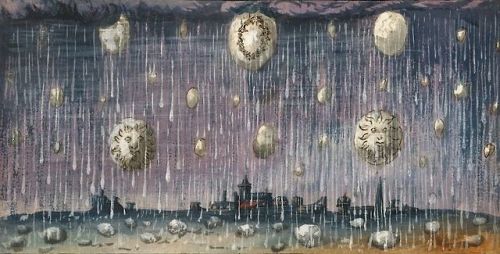
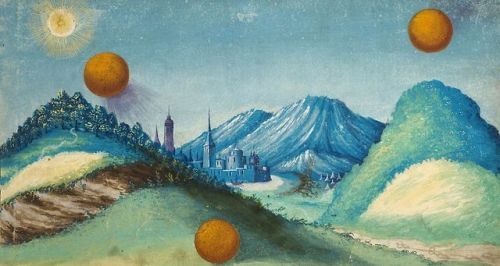
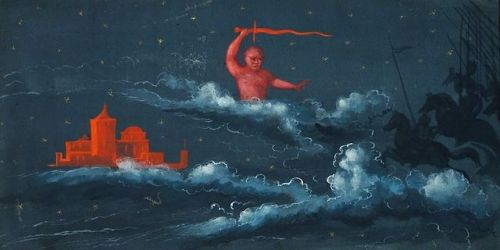


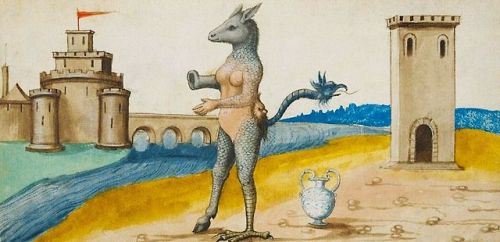
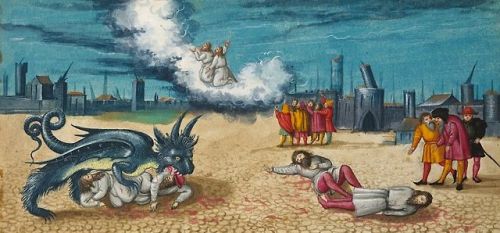

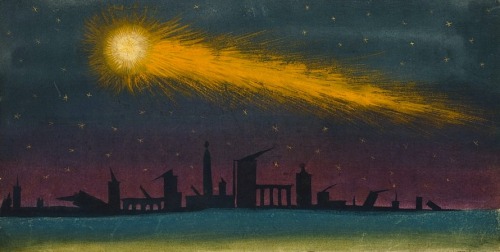
Das Wunderzeichenbuch (The Book of Miracles) Augsburg, ca. 1552.
people with friends never understood the pain of the teacher saying “pick your own partners”
Mary Queen of Scots

Out January 2019 #maryqueenofscots
Rare first edition of ‘The Map that Changed the World’ unearthed

A rare early copy of William Smith’s 1815 Geological Map of England and Wales, previously thought lost, has been uncovered by Geological Society archivists. The new map has been digitised and made available online in time for the start of celebrations of the map’s 200th anniversary, beginning with an unveiling of a plaque at Smith’s former residence by Sir David Attenborough.
This was the first geological map of a nation ever produced, and shows the geological strata of England, Wales and part of Scotland. The newly discovered copy is thought to have been one of the first ten produced by William Smith (1769-1839), who went on to make an estimated 370 hand-coloured copies of the map in his lifetime. Read more.

For the woman whose husband makes an “extra stop” after work every evening.
For the woman who is mourning the loss of a pregnancy that nobody else knew about.
For the woman who still leads from the front even although she’s lost inside.
For the woman who was fired for her fourth late because she has been awake for a straight week with a sick child.
For the single mom who doesn’t know how the utilities are going to stay on this month.
For the woman who has gone through 2 IVF’s and has tried for five years without success but still shows up to every baby shower for her friends.
For the woman who still hasn’t forgiven herself for the abortion that she had 20 years ago.
For the woman who has a line of judging eyes at her and her children as she counts out coins or has to put something back at the supermarket.
For the woman that opens the door to the news of her husband being killed overseas three weeks before he was to return home.
For the woman that lives with a quiet anxiety because nobody understands what you could possibly be stressed about.
For the woman that gives to her family all day- everyday and just.needs.a.break.
For the woman that smiles at strangers all day in public- but weeps silently every night.
For the woman who has wanted to end it all but found strength to carry on.
For the woman that heard the rumor about herself at church today.
For the woman sleeping next to a stranger every night.
For the woman whose genetics will never allow her to look like the ones in the magazines.
For the woman that endures one broken relationship after another because there was no father around to teach her what love looks like.
For the woman raising a fatherless daughter and praying that history doesn’t repeat itself.
For the woman who loves with all her heart who’s desperate to be loved.
For every single woman that cries in the shower so that nobody else can see. Because if you aren’t strong-nobody is.
Just because the water washes your tears doesn’t mean that you don’t cry. Just because you cry doesn’t mean that you’re not strong enough to handle it.
I am you. I see you. I am with you, I cry with you. I love you.
https://www.instagram.com/p/BnVzWHihD0lLNoIrj6NZ7dz07o9iMgJuNLSMQM0/?utm_source=ig_tumblr_share&igshid=1cmjigijmsw3k


Plastic water bottles might soon be a thing of the past thanks to these incredible edible water bubbles created by an innovative sustainable packaging start-up based in London, UK.
The bubbles, called the Ooho!, are created by encasing a blob of drinking water within an edible membrane made from a natural seaweed extract. Nothing goes to waste, and the product will fully biodegrade in 4-6 weeks if left unconsumed.
The team behind this brilliant idea is called Skipping Rocks Lab, a bunch of engineering graduates from RCA and Imperial College London who first introduced their ground-breaking concept in 2013. Since then they’ve been working hard to make their dream a reality, and a crowdfunding page they recently set up has already raised over 600k GBP (750k USD) in just a few days. Given that the US alone uses an estimated 35 billion plastic bottles per year, and given that plastic water bottles take hundreds of years to decompose, this sounds like a brilliant idea that everybody should get behind. (Source)






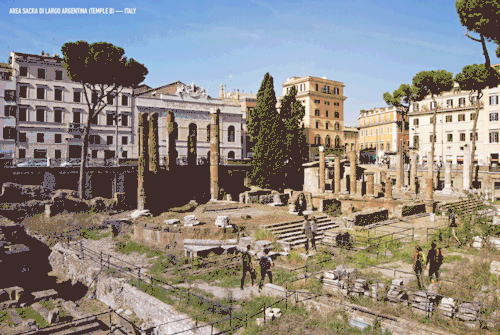
Ancient ruins give us a fascinating window into the past..
Ancient ruins give us a fascinating window into the past: how people lived, the spaces they inhabited and their daily lives. Historians, architects and travellers alike marvel at these remnants of time past, but it’s often hard to get a sense of what these spectacular buildings would have looked like at their peak. We decided to step back in time and recreate some of our favorite ancient ruins in their original locations.
Identified from the top:
The Parthenon Athens, Greece / 432 BC
Luxor Temple Luxor, Egypt / 1380 BC
Nohoch Mul Pyramid (Coba) Quintana Roo, Mexico / 100 BC-100 AD
Temple of Jupiter Pompeii, Italy / 200 BC
Milecastle 39 (Part of Hadrian’s Wall) Northumberland, England / 100 AD
The Pyramid of the Sun, Teotihuacán Teotihuacan, Mexico / 200 CE
Area Sacra di Largo Argentina—Temple B Rome, Italy / 101 BC

People are like stained-glass windows. They sparkle and shine when the sun is out, but when the darkness sets in, their true beauty is revealed only if there is a light from within. ~ Elizabeth Kübler-Ross ~
Art By Super Carmen Bass :)))